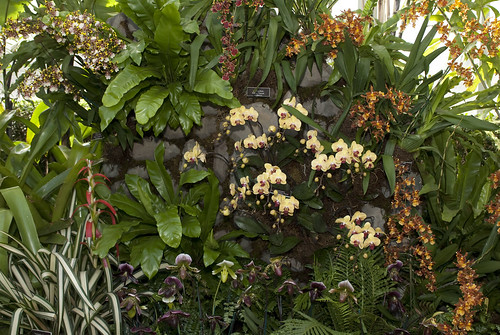The Orchid Show Spotlight: Sugar Mill Ruin
Posted in Exhibitions, The Orchid Show on March 9 2010, by Plant Talk
 |
Jessica Blohm is Interpretive Specialist for Public Education. |
 Christopher Columbus first landed in Cuba in 1492, leading the way to the country’s being settled in 1511 by the Spanish, who quickly discovered how well suited the land was for growing sugarcane. The plant, which is from the South Pacific island of New Guinea and thrives only in tropical areas, had been introduced to the New World by Columbus during his second voyage (1493–96).
Christopher Columbus first landed in Cuba in 1492, leading the way to the country’s being settled in 1511 by the Spanish, who quickly discovered how well suited the land was for growing sugarcane. The plant, which is from the South Pacific island of New Guinea and thrives only in tropical areas, had been introduced to the New World by Columbus during his second voyage (1493–96).
European colonial powers established huge slave-based sugar plantations throughout Cuba and the Caribbean. The cane sugar industry became Cuba’s economic mainstay of the 17th and 18th centuries.
But by the 20th century, the popularity of sugarcane gave way to an alternative source of sugar—the sugar beet, which could be grown in Europe and other temperate regions. This new sweetheart crop plant, coupled with the abolition of slavery in 1886, resulted in the closing of numerous sugar mills throughout Cuba and the Caribbean. Ruins dotted these lands, many of which have since been reclaimed by native forest.
A re-created sugar mill ruin and sugar cane can be seen in The Orchid Show: Cuba in Flower.

